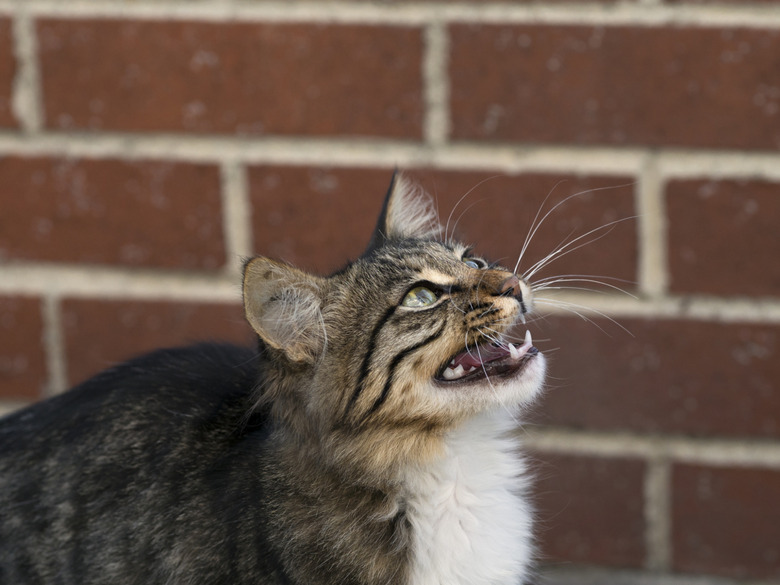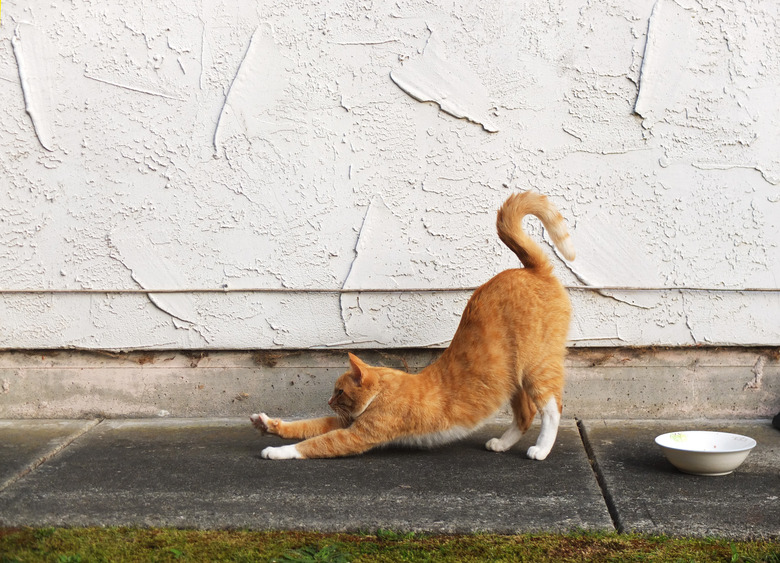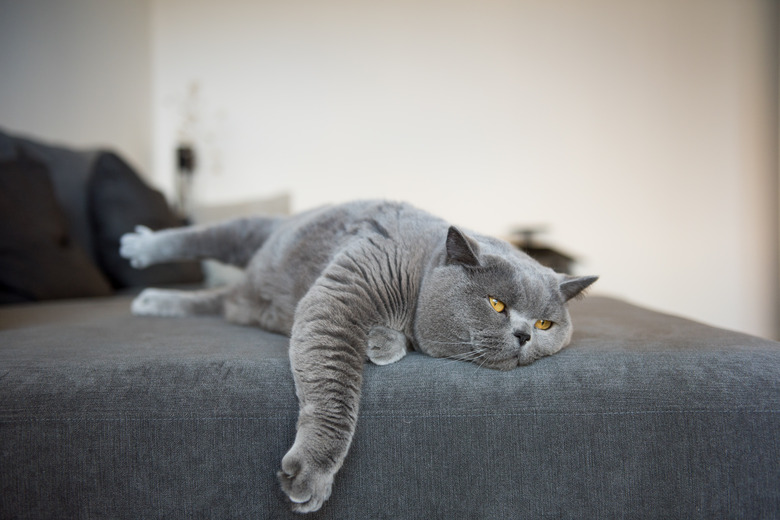How To Stop A Cat From Being In Heat
Cats grow up pretty quickly, and before you know it, your 4-month-old kitten could be experiencing her first heat cycle. Once she goes into heat, she'll meow incessantly and do everything she can to escape outdoors and find a mate. Is there anything you can do to stop this?
Fortunately, you can have your cat spayed to stop your cat from being in heat. This simple procedure is the only foolproof way to prevent unwanted kittens too, but there are a few other things you can do to at least prevent your cat from getting out and mating.
Cats going into heat
Cats going into heat
Starting at 4 to 6 months of age, your cat will experience her first heat cycle. Each cycle has five parts: proestrus, estrus, interestrus, diestrus, and anestrus. It's when she's in the estrus part of this cycle that she's considered to be in "heat." This part of the cycle can last anywhere from three to 14 days and will repeat every two to three weeks until she mates.
Most cycles are seasonal and start in the fall or spring, but some indoor cats can experience year-round cycles. Once your cat is in heat, she'll be ready to mate and will do anything she can to escape outdoors to find a male cat.
Signs of a cat in heat
Signs of a cat in heat
Once your cat goes into heat, she'll start caterwauling, or crying loudly, especially at night. This behavior is due to the fact that she wants to announce to the neighborhood that she is ready to mate. In addition, you might notice that your cat becomes very affectionate and wants lots of attention. She'll also start rolling around on the floor, rubbing on various objects, and even urinating outside of her litter box.
The reason a cat in estrus urinates around your home is the same reason she starts vocalizing — it's a desire to communicate her availability to other cats. That's because her urine contains pheromones that advertise her status to other cats.
How to stop the heat cycle
How to stop the heat cycle
The only foolproof way to stop the heat cycle is to have your cat spayed. This operation, known as an ovariohysterectomy, removes your cat's uterus and ovaries. It's performed under anesthesia by a veterinarian, and the small incision made on your cat's tummy is stitched or surgically stapled so it can heal for seven to 10 days.
Not only will spaying your cat stop any further heat cycles from occurring but it prevents unwanted pregnancies as well. Plus, in multicat households, there will be no reason to separate your male and female cats if they are all spayed and neutered. Additionally, cats who are spayed have a much lower chance of developing certain types of cancers, like breast cancer, and the operation eliminates the chance of uterine and ovarian cancers.
Feline birth control
Feline birth control
If your cat is not spayed, keeping her away from male cats and indoors at all times while she's in heat is the only way to prevent her from becoming pregnant. In addition, you'll have to ensure that all male cats in your home or indoor/outdoor cats who have access to your home are neutered.
In certain cases, your veterinarian may be able to administer a medication called megestrol acetate, a synthetic progestin hormone, as a form of feline birth control to stop her from going into heat. This medication has many potentially serious side effects to cats who take it, and you must wear gloves when giving it to your cat. Plus, you can't give it safely for more than 30 weeks. That's why it's typically used more for feral cats who can't be trapped and spayed right away.


